Positive Health Online
Your Country

Clinical Psychoneuroimmunology - Mind-Body Integrated Health
by Dr Alexandra Concorde (formerly Pandolfino)(more info)
listed in mind matters, originally published in issue 88 - May 2003
PNI the Pinnacle
Psychoneuroimmunology (PNI) is at the pinnacle of all effective traditional and complementary approaches to health. Consequently, it is an extremely important subject to all within the field. We stand before an opportunity unique in modern medical history – where there is an actual possibility of finding sustainable solutions to a multitude of very significant health challenges associated with stress.
And PNI is the lynch pin. This article is the first to explore PNI from the perspective of effective clinical application.
Why the Interest in Clinical PNI?
There are three main reasons for such widespread interest in PNI throughout the field of health:[1]-[5]
1. Stress and clinical disease. PNI provides a platform for understanding how exposure to stress and stressors may be relevant to the onset and progression of clinical disease;
2. The individual. PNI explains how subjective phenomena – such as perception and personal experience, unresolved negative emotions (e.g. anger, guilt), psychological states, internal conflict, personality traits, emotional and coping behaviour – may be linked to disease predisposition and prognosis;
3. Mind-body therapies. 'Neuro-immunomodulatory' pathways – that is PNI pathways which modulate the immune system via the neural (nerve) network – provide a powerful explanation of how many complementary approaches may actually work, and how to make them even more effective on a predictable and reproducible basis.
Case History
Joan is a 39-year-old woman who had irritable bowel syndrome. For 18 years she had diarrhoea at least five times a day, every single day. At times of stress she was unable to work since she needed constant access to the toilet. Her relationship suffered from the restrictions her condition imposed. Prior to her getting married she was perfectly healthy. Joan was consumed by guilt and fear from the sexual abuse she suffered as a child. Interestingly she believed that her IBS was responsible for her sub-fertility. She did not believe that she deserved children even though she desperately wanted kids. She had tried acupuncture and hypnosis for her IBS with very limited and transient success. Using applied PNI approaches in an intensive single day session, Joan resolved all the negative emotions and limiting beliefs directly related to her challenges. Her IBS was gone the very next day and for the first time in 30 years she was able to sleep and eat normally. We evaluated all physiological aspects of her condition and addressed nutritional concerns. In subsequent coaching sessions she evaluated external sources of stress in her life and took appropriate action. She was then easily able to give up smoking with acupuncture and using hypnosis, 14 months later was able to give birth relatively free of pain. Joan now meditates, has regular massage and pays close attention to her nutritional status in order to maintain her ongoing health.
What is PNI?
PNI is the advanced scientific discipline that explains how the mind (psycho-), the nervous system (neuro-) and the immune system (immunology) communicate and interact through a complex series of pathways and molecules. The endocrine (hormone) system is also a critical component (Diagram 1). PNI 'exists' so that the body can create an integrated response to a 'central directive' – like the whole hockey team responding to one coach with one goal in mind at any moment in time. Each constituent system or player has its own specialized functions, and simultaneously monitors and responds to the others. Communication is achieved through neuro-transmitters, hormones and cytokines. There is much interest in the specific molecules involved. However, at the highest level of application, PNI is most usefully regarded in terms of the collective impact on the body of all these component systems reacting cohesively to a central command.
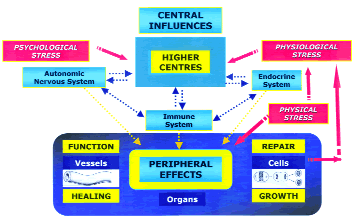
DIAGRAM 1. An overview of the PNI systems which dynamically
connect the mind (higher centres) with the body (periphery).
How Does a PNI Approach Work?
PNI undeniably demonstrates that practically all of the body's defence systems are under the control of the central nervous system (CNS). There are prominent psychological aspects to these central influences. Every personally-held value, belief, thought or idea, everything we learn and pay attention to, can have remote neuro-chemical consequences at the level of the cell (peripheral effects).[1],[2] This is the basis for the relationship between individual subjectivity and disease.
As a science, PNI explains how relatively small changes arising at a high central level can cascade downwards to create diverse and widespread effects at the periphery. Applied PNI uses the principle in reverse: starting with the peripheral effects to ascertain the highest central level relevant to the presentation, then working deliberately and directly with the PNI axis at the highest possible levels (i.e. central pathways) to provide maximum leverage and impact over the peripheral effects. In diseases with a high association with stress, individual subjectivity is an extremely important component for therapeutic consideration.
Case History
Susan presented to a PNI clinic with a two-year history of high blood pressure which had been poorly responsive to treatment. She was very worried that she would follow in the footsteps of her mother and maternal grandmother, both of whom had died following severe cerebral haemorrhages secondary to malignant hypertension. She also did not consider it acceptable that she had episodic angina at 46years of age and felt that "there was more to it than just physical things". With further exploration we discovered that she had had an increased susceptibility to debilitating colds over the past 14 months and that she had changed jobs two and a half years beforehand. During the initial six months her work was fairly predictable, but then she was expected to take a more prominent role, which required considerable public speaking.
During presentations she suffered sweaty hands, palpitations and angina. Leading up to a speaking engagement she had difficulty sleeping, suffered irritability and was extremely likely to acquire a cold with loss of voice, which sometimes even required her to delegate the presentation to a colleague. Using applied PNI approaches we ascertained that the highest level issue was debilitating loss of self-esteem when standing in front of people. It stemmed from a very distant event when she had been "knifed in the heart" by the headmaster who made public fun of her inability to recite the Lord's Prayer audibly to a 300-pupil assembly. This had been a source of significant playground teasing (and isolation) for months afterwards. Her applied PNI programme required the notable subjective issue to be completely resolved and every relevant strand beyond that re-evaluated during the initial 10-hour session. Her blood pressure was normal by the end of that session. She then had both specialist (cardiovascular) health and presentational skills coaching culminating in a public speaking event in which she did not experience any adverse symptoms, either before or during the event.
How PNI Interacts With Stress?
A 'stress' is any stimulus (stressor) that evokes or accentuates an alarm reaction in the brain (stress perception) and activates preservationist physiological and biochemical reactions in the body (stress response). It is entirely subjective and individual. At different times in someone's life, in differing contexts and even at different times of day, an individual's own view of what constitutes a stress will vary. Overall stress arises when an individual believes that the demands upon them exceed their perceived personal resources to meet the sum of their challenges within a given time frame.
The stress response is initiated in the CNS in reaction to internal and/or external stimuli. The limbic system integrates copious (109 bits per second) amounts of sensory information from both the 'inner world' (physiological variables) and 'outer world' (physical parameters) and determines which 'programme' the hypothalamus should run (Diagram 2).
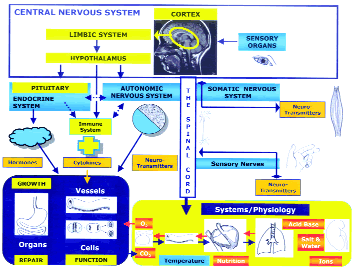
DIAGRAM 2. PNI systems and pathways (left hand side). The CNS also communicates
with the periphery via the somatic nervous system, and receives information from sensory nerves
and organs. The health and effective function of the tissues also depends on
other physiological and biochemical (orange boxes) parameters.
There are two main choices of hypothalamic programme – the 'alarm reaction' or the 'nutritive non-alarm reaction'. Which programme runs depends on the limbic system's overall sense of well-being. If it perceives a threat it will mobilize and stimulate the body's resources for meeting emergencies. If it believes that 'all is safe' it will seek to conserve and build up the body's resources to meet requirements for repair, growth and development – which of course is important for healing. Every limbic system-generated reaction involves numerous integrated neural, endocrine and immune system changes. This is PNI.
The limbic system provides perceptual, experiential and emotional significance for incoming stimuli, so that the responses it generates via the hypothalamus have a major role in determining how an individual's physiology can reflect their subjectivity. Note that the physiological and biochemical effects of increased sympathetic nervous system activity materialize even if the external threat is not 'real' (for more on this please see 'The Individual and Subjectivity' below and Nancy Blake's excellent PNI and NLP article).[6] 'Danger' thoughts can also extend to other vital interests, such as welfare of loved ones, self-esteem, financial security.[7]
Case History
Alan is a 35-year-old gentleman who returned in November 2001 from a placement with an international medical aid agency in Nigeria.
He 'caught a chill' after two weeks in Britain and suffered a fever, sore throat and general malaise. He was convinced he must be HIV positive and was extremely stressed. He suffered numerous minor limited infections which he took as evidence that he had now developed full-blown AIDS. He found himself to be too weak to work, requested extensions on all due reports, and felt incapable of activity outside of meeting the most basic constitutional needs. His stress levels continued to rise, he developed insomnia and lost weight. After four months he mustered the courage to request a HIV test. It was negative. Within three weeks of these perceptual changes all his physical 'inabilities', 'shortfalls' and symptoms had completely resolved.
PNI, Stress and Disease are Connected
Stress is one of the primary causes and co-factors of both mental and physical illness. Diagram 3 illustrates the potential clinical impact of various stresses on the immune system (please also see Dr Cohen's stimulating recent article for mechanisms).[8]
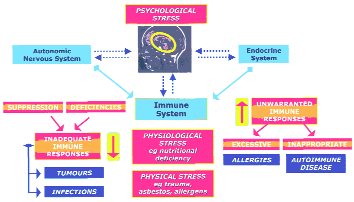
DIAGRAM 3: Stresses, altered immunity and possible clinical outcome.
PNI is the 'mechanics and electrics' of the whole stress paradigm from the highest level downwards. Numerous pathologic conditions are associated with increased (e.g. anorexia nervosa, obsessive-compulsive disorder, childhood sexual abuse) or decreased (e.g. seasonal depression, alcoholism, rheumatoid arthritis) activity of the limbic-hypothalamic-pituitary axis.[9] The contribution of stressors, stress and stress responses has been demonstrated in cancer, mental illness, heart disease, chronic infections, diabetes mellitus, autoimmune diseases, allergies, multiple sclerosis, peptic ulceration, inflammatory bowel disease, irritable bowel syndrome, chronic fatigue syndrome (and so on – the list is staggering) – as well as learning difficulties, addictive behaviour, ageing, accidents, suicide and even dental health!
The Individual and Subjectivity
For any person who believes that their clinical condition has an association with stress or stressors, a PNI intervention would necessarily entail highly individualistic work at the level of cortico-limbic-hypothalamic interactions. The limbic system integrates incoming physiological and physical data with information from the cortex (regarding interpretations, plans, interest etc.), and itself assigns emotional and experiential significance to the data from its own files. This is how an individual's physiological responses to incoming sensory data are influenced by subjective experience (Diagram 4).
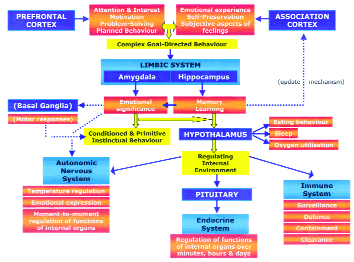
DIAGRAM 4: Experience and subjectivity: pathways for individually meaningful mind-body healing
The limbic system subordinates instinctive or conditioned behaviour (limbic) to acquired intentional behaviour (cortical) – which is why it is so important to focus your attention on what you actually want. It also reconciles competing internal and external motivations.[7],[10] One of the challenges for the limbic system is in ascertaining what route to take when there are numerous simultaneous demands for limited resources. This can result in physiological stress which can result in dis-equilibrium, which can result in disease. Which of a range of physiological demands is assigned greatest significance is also in part determined by subjective criteria.
Working with subjectivity issues is the 'applied' element of 'applied PNI'. The individual's subjectivity, past experiences, negative emotions, personality, values and belief systems are fundamental to their perception of stress and therefore the stress response. It is essential to resolve these subjective factors at the very highest levels (i.e. at source) to produce meaningful sustainable improvements in any clinical or psychological condition in which stress is a significant precipitating, augmenting or perpetuating factor.
PNI at the Level of Clinical Application
Subjectivity is a high level psychological aspect of healing and health. While extremely important, in common with other authors we also do not consider that psychological approaches alone can restore an individual to the equilibrium required for ongoing mind-body integrated health.[11] Psychological issues may be secondary to physiological changes (e.g. heart disease > concern about physical activity) or indeed physical factors (e.g. a broken limb; physical cues associated with a stress response etc) and so on. Physical and physiological stresses from environmental sources for a child in Chernobyl are hardly the same as those for a child in Surrey. And each individual is complex and multi-dimensional and operates on several different levels simultaneously. Our approach is to ascertain the 'root cause' issue (or the highest level issue) in each of the three segments shown in Diagram 5 and deal with them all as effectively as possible as part of a programme.
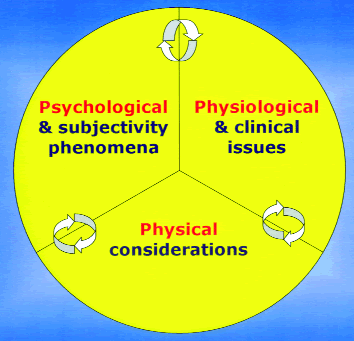
DIAGRAM 5: The 'Octopus 3P Variables' of Applied Clinical PNI.
These three components of stress are dynamically-interrelated. All sources of stress and
effects of stress fall into one of these three categories.
Applied clinical PNI involves:
1. Understanding how and why different variables (e.g. 'stressors') influence a particular individual in a particular way from a clinical perspective;
2. Ascertaining how to restore the equilibrium required for that individual to be healthy from psychological, physical and physiological perspectives;
3. Establishing the most effective way of arresting and resolving the disease process using all options available (PNI-based, traditional and complementary approaches) – starting from highest level issues downwards;
4. Working out what has to happen for that individual to maintain on-going health;
5. Empowering the individual and enabling them to focus their efforts on what really makes a difference.
Capability Issues, Energy and Mind-Body Healing
We have ascertained that the vast majority of interventions are 'strategies' for 'getting better'. This is excellent as long as there is nothing holding the individual back. 'Capability' issues (Diagram 6) are issues which stand between an individual and perfect health. The analogy is of a driver of a perfectly-maintained high-performance car (vehicle), who has advanced driving skills (strategies) and who knows where he is going (knowledge) – but who keeps driving into a brick wall. Until the brick wall is removed an inordinate amount of energy is required to inch forward or, indeed, standstill. Once the brick wall is removed the car will fly forward and the strategies and knowledge become powerful means of ensuring that the desired destination is reached.
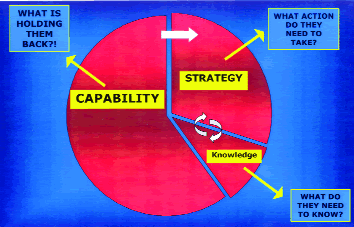
DIAGRAM 6: The 'Octopus CSK' of Applied Clinical PNI. The fastest route
to sustainable change is C> S> K. A client must satisfy all three elements to achieve meaningful results.
The highest level principle of Applied Clinical PNI is that anything that requires on-going energy to maintain will only be sustainable while the energy does not need to be diverted to something else (i.e. during the next stress response, hence the exacerbation of otherwise controlled diseases/behaviour in 'stressful' circumstances). This is an important distinction between 'resolution' and 'management' of stress.
Case History
David, a 37-year-old technical architect, presented with multiple phobias and severe obsessive-compulsive disorder. Despite excellent cognitive-behavioural therapy his life was still significantly restricted since his symptoms were extremely pervasive and associated with several activities of regular living. The CBT, while very effective, required much more attention and 'spare' energy than he had available in a normal working day. He has himself realized that the only way of improving on the significant results he had obtained through CBT (a 'strategy') was to get to and remove the root cause of his problems (a 'capability' approach). During his Applied PNI programme it transpired that the highest level issue was intense fear which he had inadvertently developed to suppress rage consequent of a relentless period of bullying he suffered at 16. He received 20 hours of intensive 1-2-1s over a few consecutive days. His CBT had already equipped him with very useful strategies for determining which behaviours he would choose to explore, from his range of new options.
Capability issues may exist in any or all of the 3P segments. The aim is to restore 100% capability for ongoing health in each of the 3Ps for meaningful mind-body integrated health. Ideally the 'C' segment is addressed first. The practitioner must then ensure that the client has all the necessary strategies (e.g. dietary plan) and knowledge (e.g. of appropriate nutrition) to regain and maintain their vitality – and that they are fully motivated to take all necessary actions.
To conclude
There are now exciting opportunities to pursue mind-body integrated health using combinations of effective traditional and complementary approaches in Applied Clinical PNI programmes. Several clinical fields which have traditionally challenged professionals – e.g. breast cancer, PTSD, chronic fatigue syndrome, heart disease, HIV – are amenable to treatment approaches which restore equilibrium to chronically disrupted PNI pathways. We have entered the new and exciting phase long awaited by health practitioners who have always been sure of the relationship between stress and disease and who want to know how to manipulate the 'mechanics and electrics' of stress to their clients' advantage. A phase in which the individual will necessarily be at the very centre and at the highest level of a fully integrated strategic Applied Clinical PNI programme, and in which effective mind-body therapies are pivotal to success.
References
1. Rossi E. The Psychobiology of Gene Expression. Norton. London. ISBN 0-393-70343-6. 2002.
2. Segerstrom S et al. Individual Difference Factors in Psychoneuroimmunology. In Ader R, Felten DL and Cohen N eds. Psychoneuroimmunology. Academic Press. London. Volume 2: pp87-110. ISBN 0-12-044314-7. 2001.
3. Callahan RJ and Trubo R. Tapping the Healer Within. Contemporary Books. New York. pp41-65. ISBN 0-8092-9880-5. 2001.
4. Kaminski P. Flower Essence Therapy: Integrating Body and Soul Wellness. In Bassman L ed. Mind, Mood & Emotion: A Book of Therapies. MJF Books. New York. pp259-263. ISBN 1-56731-481-3. 1998.
5. Zachariae R. Hypnosis and Immunity. In Ader R, Felten DL and Cohen N eds. Psychoneuroimmunology. Academic Press. London. Volume 2: pp133-160. ISBN 0-12-044314-7. 2001.
6. Blake N. Psychoneuroimmunology and NLP. Positive Health. 78: 14-20. 2002.
7. Coleman F and Kay J. The Biology of the Brain. In Kay J, Tasman A and Lieberman JA eds. Psychiatry: Behavioural Science and Clinical Essentials. WB Saunders. Pennsylvania. pp115-138. ISBN 0-7216-5846-6. 2000.
8. Cohen S. Happiness and The Immune System. Positive Health. 82: 9-12. 2002.
9. Willenberg H et al. Stress-Induced Disease: an overview. In: Fink G ed. Encyclopaedia of Stress. Academic Press. London. Volume 1: pp709-713. ISBN 0-12-226735-4. 2000.
10. Guyton A. Behavioural Functions of the Brain: The Limbic System, Role of the Hypothalamus, and Control of Vegetative Functions of the Body. In Guyton AC ed. Textbook of Medical Physiology. WB Saunders. Pennsylvania. pp676-684. ISBN 0-7216-1260-1. 1986.
11. Vickers A. Against Mind-Body Medicine. Positive Health. 37. 1999.
Comments:
-
Dante said..
As a Clinical Hypnotherapist and Neuro-Linguistic Life Mastery Specialist, I am every day more fascinated with this field of study. Thanks to the widespread information source of the internet, PNI stands at a pivotal point in history. Thank you very much for providing this easy to read description with diagrams that I can now share with clients, friends, and family!